The Ultimate Guide to Asset Tracking Software
Businesses rely on various assets to operate efficiently. From IT equipment and software licenses to vehicles and machinery, keeping track of these assets is critical. Asset tracking software helps organizations streamline asset management, improve security, and maximize resource utilization.

This guide explores everything you need to know about asset tracking software, including features, benefits, use cases, and best practices.
What is Asset Tracking Software?
Asset tracking software is a tool that helps organizations monitor and manage their assets throughout their lifecycle. It provides real-time visibility, automated tracking, and minimizes loss or mismanagement. This software is used in various industries, including IT, manufacturing, healthcare, logistics, and retail.
Key Features of Asset Tracking Software
Asset tracking software provides businesses with the ability to monitor, manage, and optimize their assets efficiently. The key features of such software include:
1. Real-Time Asset Tracking
Modern asset tracking solutions use barcode scanning, and IoT technologies to provide real-time visibility into asset locations and movements. This prevents asset misplacement, enhances security, and improves operational efficiency.
2. Automated Asset Discovery & Inventory Management
The software continuously scans and updates asset records, reducing manual errors and ensuring accurate asset inventory. It helps businesses maintain an up-to-date log of all physical and digital assets.
3. Asset Lifecycle Management
Tracks assets from procurement to disposal, helping organizations understand asset utilization, maintenance needs, and depreciation over time. This ensures better financial planning and compliance.
4. Check-In/Check-Out System
Allows employees to borrow, return, or transfer assets systematically, preventing loss and unauthorized usage. Ideal for IT equipment, tools, and shared office resources.
5. Barcode & QR Code Integration
Supports scanning and tagging of assets using barcodes and QR codes for faster identification and retrieval. Mobile-friendly solutions enhance flexibility in tracking.
6. Predictive & Preventive Maintenance
Automates maintenance scheduling based on asset condition, usage, or predefined intervals. It helps in reducing downtime, prolonging asset lifespan, and avoiding unexpected failures.
7. Customizable Alerts & Notifications
Sends automated alerts for maintenance, contract renewals, warranty expirations, or unauthorized movements, ensuring timely actions and compliance.
8. Cloud-Based & Mobile Access
Enables remote tracking and management of assets through cloud-based platforms and mobile applications, providing real-time insights for field teams and distributed enterprises.
9. Role-Based Access Control (RBAC)
Ensures data security by restricting access based on user roles and permissions. Administrators can control who can view, modify, or delete asset records.
10. Comprehensive Reporting & Analytics
Provides detailed insights into asset performance, utilization trends, and financial data. Customizable reports help in data-driven decision-making and regulatory compliance.
11. Depreciation & Financial Tracking
Automatically calculates asset depreciation using different accounting methods, helping organizations manage financial records, tax deductions, and budget planning effectively.
These features collectively enhance asset visibility, reduce losses, improve maintenance efficiency, and optimize resource allocation.
Without a ticketing system, employee inquiries and internal requests can get lost in emails, chats, or verbal conversations. A ticketing system centralizes all communication, ensuring that requests are properly logged, tracked, and addressed.
Benefits of Asset Tracking Software
Asset tracking software offers significant advantages for businesses by improving visibility, efficiency, and cost control. Below are the key benefits:
1. Improved Asset Visibility & Control
With real-time tracking, businesses can monitor asset locations, status, and usage, reducing the chances of misplacement, theft, or unauthorized use.
2. Reduced Operational Costs
By minimizing asset loss, optimizing utilization, and automating maintenance, companies can significantly cut unnecessary expenditures and improve cost efficiency.
3. Enhanced Productivity & Efficiency
Automating asset management processes reduces manual tracking efforts, allowing employees to focus on core business operations rather than asset administration.
4. Minimized Downtime & Optimized Maintenance
With predictive and preventive maintenance features, organizations can ensure timely servicing, reducing unexpected equipment failures and improving operational continuity.
5. Accurate Asset Depreciation & Financial Planning
The software tracks asset depreciation, helping businesses make informed financial decisions, manage tax deductions, and plan budgets effectively.
6. Streamlined Compliance & Auditing
Maintaining accurate asset records ensures compliance with regulatory requirements and simplifies auditing processes, reducing the risk of fines or legal complications.
7. Faster Check-In/Check-Out Process
For businesses with shared resources, the check-in/check-out feature ensures proper tracking of asset usage, preventing unauthorized access and loss.
8. Improved Decision-Making with Data Analytics
Advanced reporting and analytics provide valuable insights into asset performance, usage trends, and cost analysis, helping organizations optimize resource allocation.
9. Scalability & Remote Access
Cloud-based asset tracking solutions allow businesses to scale operations and manage assets remotely across multiple locations, supporting growth and remote work environments.
10. Seamless Integration with Business Systems
Integration with ERP, ITSM, and financial software ensures smooth workflows, eliminating data silos and improving overall operational efficiency.
By leveraging asset tracking software, businesses can enhance accountability, optimize asset utilization, and drive cost-effective operations while maintaining compliance and security.
Industries That Benefit from Asset Tracking Software
Asset tracking software is essential for industries that manage large inventories, high-value equipment, or distributed assets. Below are key sectors that benefit from this technology:
1. Manufacturing & Industrial
- Tracks machinery, tools, and raw materials across production lines.
- Ensures proper maintenance scheduling to prevent downtime.
- Enhances inventory management and reduces equipment loss.
2. Healthcare & Medical Facilities
- Monitors medical equipment, patient records, and pharmaceuticals.
- Prevents asset misplacement and ensures compliance with health regulations.
- Automates maintenance for life-saving equipment like ventilators and MRI machines.
3. IT & Technology
- Manages hardware, software licenses, and digital assets.
- Ensures proper allocation of IT resources for employees.
- Helps in cybersecurity by tracking devices and data access.
4. Construction & Engineering
- Tracks heavy equipment, tools, and vehicles across multiple job sites.
- Reduces theft and unauthorized use of costly machinery.
- Maintains accurate records of equipment maintenance and usage.
5. Logistics & Transportation
- Enhances fleet management by tracking vehicles and shipments in real time.
- Optimizes route planning and fuel efficiency.
- Improves compliance with safety regulations and asset maintenance.
6. Retail & E-commerce
- Manages inventory, store fixtures, and warehouse equipment.
- Prevents stock shortages and overstocking with real-time data.
- Enhances supply chain visibility for better order fulfillment.
7. Education & Research Institutions
- Tracks IT equipment, laboratory tools, and teaching materials.
- Simplifies asset check-in/check-out for students and faculty.
- Ensures proper maintenance of high-value research equipment.
8. Government & Public Sector
- Manages public assets, infrastructure, and utility equipment.
- Improves accountability and prevents asset mismanagement.
- Enhances emergency response by tracking critical resources.
9. Energy & Utilities
- Tracks power grid assets, oil and gas equipment, and renewable energy infrastructure.
- Ensures compliance with environmental and safety regulations.
- Optimizes maintenance and reduces asset downtime.
10. Hospitality & Tourism
- Manages hotel assets, including furniture, electronics, and kitchen equipment.
- Tracks guest amenities and reduces operational inefficiencies.
- Enhances customer service by ensuring asset availability.
By implementing IT asset tracking software, industries can improve operational efficiency, reduce losses, and enhance compliance while optimizing resource utilization.
Choosing the Right Asset Tracking Software
Selecting the right asset tracking software is crucial for improving asset management, reducing losses, and enhancing operational efficiency. Below are the key factors to consider when choosing the best solution for your organization:
Deployment Type: Cloud-Based vs. On-Premises
Cloud-Based: Offers remote access, scalability, and lower upfront costs. Ideal for businesses with multiple locations or remote teams.
On-Premises: Provides greater control over data security but requires in-house IT infrastructure and maintenance.
Asset Tracking Technology
RFID & IoT Sensors: Best for real-time tracking of large inventories.
Barcode & QR Codes: Cost-effective and easy to implement for manual scanning.
GPS Tracking: Essential for monitoring mobile assets, fleets, and field equipment.
Scalability & Customization
Ensure the software can handle asset growth and evolving business needs.
Look for customizable fields, workflows, and reporting to align with industry-specific requirements.
Ease of Use & Mobile Accessibility
A user-friendly interface ensures smooth adoption by employees.
Mobile apps enable real-time asset tracking and updates from any location.
Integration with Existing Systems
The software should seamlessly integrate with ERP, ITSM, accounting, and procurement systems for streamlined workflows.
API compatibility is essential for businesses requiring extensive data connectivity.
Maintenance & Lifecycle Management
The system should support asset automated maintenance, scheduling, warranty tracking, and asset depreciation calculations to optimize asset lifespan.
Security & Compliance Features
Look for role-based access control (RBAC) to restrict unauthorized data access.
Ensure the software complies with industry regulations
Reporting & Analytics
Advanced analytics and customizable reports provide insights into asset utilization, performance, and financial impact for better decision-making.
Alerts & Notifications
Automated alerts for maintenance, contract renewals, warranty expirations, and asset movements help prevent downtime and compliance issues.
Vendor Support & Pricing
Choose a provider with reliable customer support, training, and regular updates.
Compare pricing models (subscription-based, perpetual license, or pay-per-user) to ensure cost-effectiveness.
Best Practices for Implementing Asset Tracking Software
Successfully implementing asset tracking software requires careful planning, execution, and continuous improvement. Below are the best practices to ensure a smooth and effective deployment:
1. Define Clear Objectives & Requirements
- Identify key goals such as reducing asset loss, improving maintenance scheduling, or enhancing compliance.
- Determine the types of assets to be tracked and the required features (e.g., real-time tracking, reporting, integrations).
2. Choose the Right Tracking Technology
- Barcode & QR Codes: Ideal for cost-effective tracking of fixed assets.
- RFID & IoT Sensors: Best for real-time asset monitoring.
- GPS Tracking: Suitable for tracking fleets and mobile assets.
3. Ensure Proper Data Standardization
- Establish a consistent naming convention and categorization for assets.
- Use standardized barcodes, QR codes for efficient scanning and retrieval.
4. Conduct a Comprehensive Asset Audit
- Perform an initial inventory assessment to document all existing assets.
- Verify asset details such as location, condition, serial numbers, and ownership.
5. Train Employees & Assign Roles
- Provide training on how to use the software, scan assets, and update records.
- Assign specific roles for data entry, asset maintenance, and system administration.
6. Integrate with Existing Systems
- Ensure smooth integration with Microsoft ERP, ITSM, accounting, and procurement solutions to maintain data accuracy and consistency.
- Leverage API-based integrations to automate data synchronization, eliminating manual errors and improving efficiency.
7. Automate Asset Maintenance & Alerts
- Set up automated maintenance schedules based on usage or time intervals.
- Enable real-time alerts for servicing, warranty expiration, and contract renewals to prevent unexpected failures.
8. Conduct Regular Audits & Data Validation
- Schedule periodic physical audits to verify asset records.
- Cross-check system data with actual asset locations and conditions to maintain accuracy.
9. Monitor Performance with Reports & Analytics
- Use customizable dashboards and reports to track asset utilization and lifecycle trends.
- Analyze data to identify inefficiencies, reduce costs, and optimize resource allocation.
10. Ensure Security & Compliance
- Implement role-based access control (RBAC) to restrict unauthorized modifications.
- Maintain compliance with industry regulations
Conclusion
Investing in asset tracking software is crucial for organizations looking to optimize asset management, reduce costs, and improve efficiency. By selecting the right technology and following best practices, businesses can enhance security, maintain compliance, and make data-driven decisions. Whether you manage IT assets, fleet vehicles, or medical equipment, SharePoint asset tracking software is a game-changer in ensuring accountability and maximizing asset value.
Frequently Asked Questions
What is the Best Way to Track Assets?
The best way to track assets is by using asset tracking software integrated with technologies like RFID, barcode/QR codes, GPS, or IoT sensors. These solutions provide real-time visibility, automated maintenance alerts, and seamless integration with ERP and ITSM systems, ensuring accuracy and efficiency in asset management.
What is the Simplest Way to Track Inventory?
The simplest way to track inventory is by using a barcode or QR code-based inventory management system. Employees can scan items using mobile devices or handheld scanners, automatically updating stock levels in real-time. This method is cost-effective, easy to implement, and minimizes human errors in inventory tracking.
How does asset tracking software work?
It assigns a unique identifier (barcode, QR code, RFID tag, or GPS tracker) to each asset, allowing businesses to track its location, status, usage, and maintenance history in real time through a centralized system.
What types of assets can be tracked?
Businesses can track IT equipment, machinery, vehicles, medical devices, office furniture, tools, raw materials, and even digital assets like software licenses.
What are the benefits of asset tracking software?
- Prevents asset loss and theft
- Improves asset utilization and maintenance
- Enhances operational efficiency
- Reduces manual tracking errors
- Ensures compliance with industry regulations
What technologies are used in asset tracking?
- Barcodes & QR Codes: Cost-effective, manual scanning
- RFID & NFC: Real-time tracking without direct line-of-sight
- GPS Tracking: Ideal for mobile assets and fleet management
- IoT Sensors: Advanced monitoring with predictive analytics
Can asset tracking software integrate with other business systems?
Yes, most solutions integrate with ERP, ITSM, accounting, procurement, and inventory management systems to ensure seamless data synchronization and workflow automation.
How secure is asset tracking software?
Modern solutions include role-based access control (RBAC), encryption, and compliance with security standards (GCC, SOC 2, etc.) to protect asset data.





















